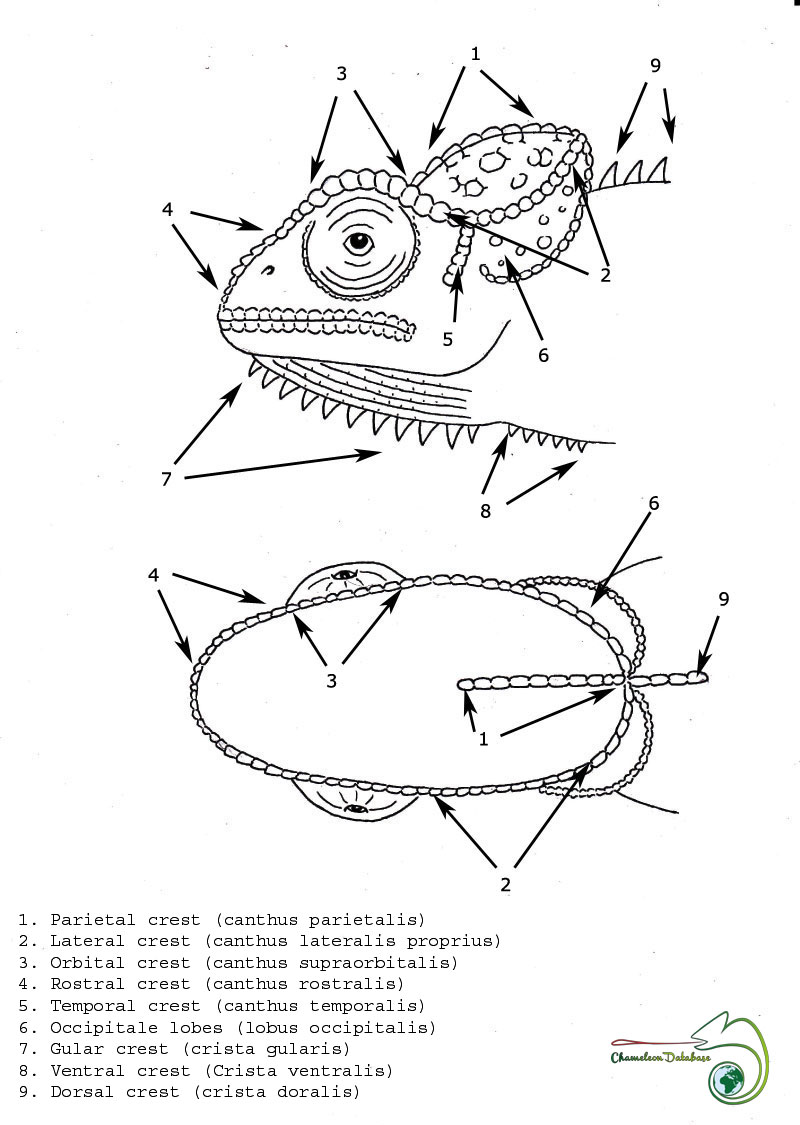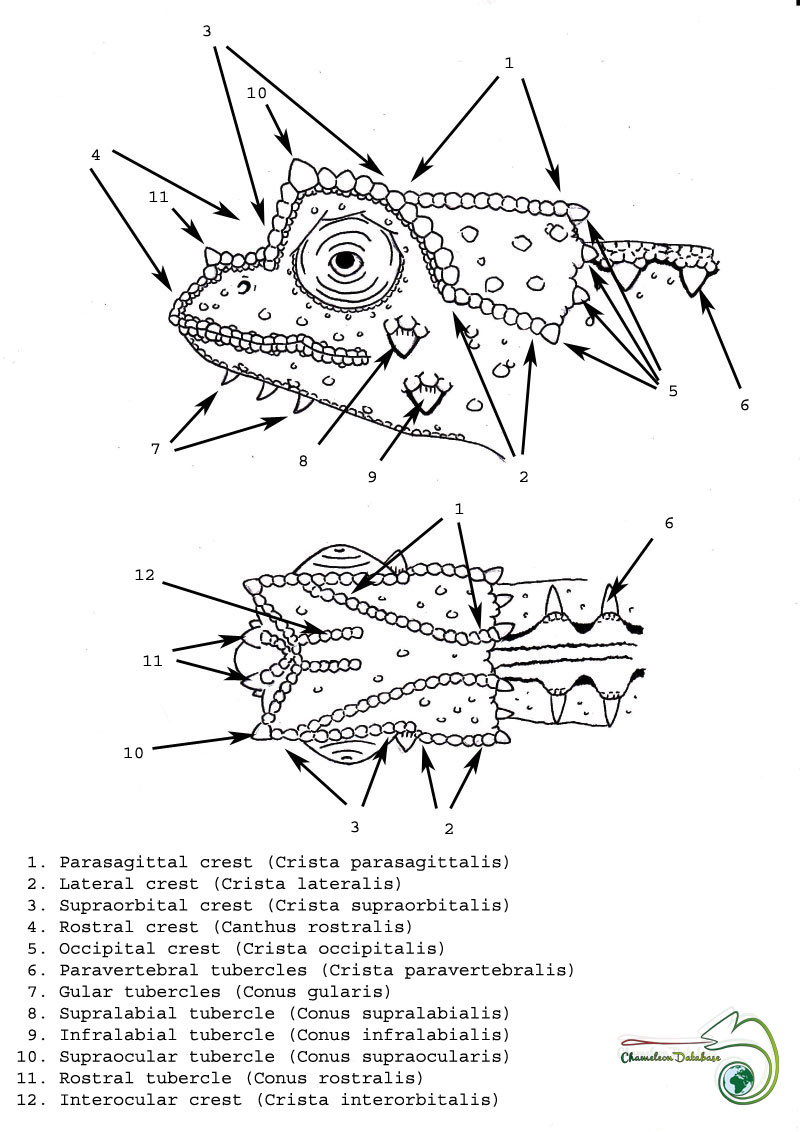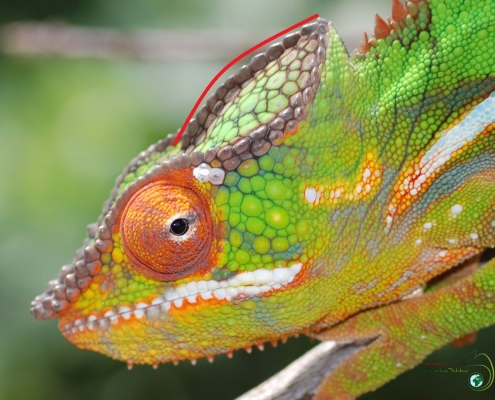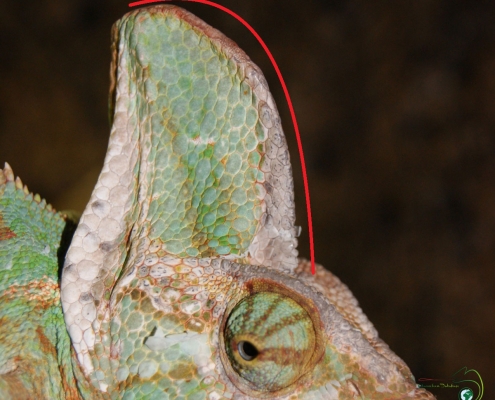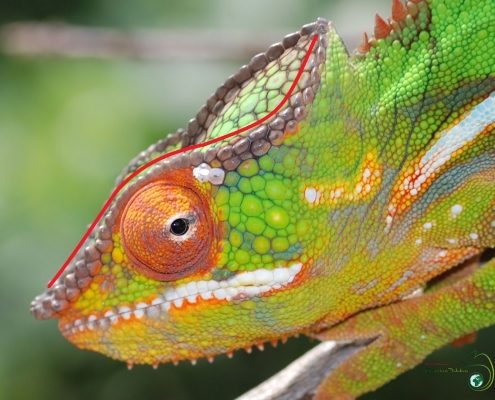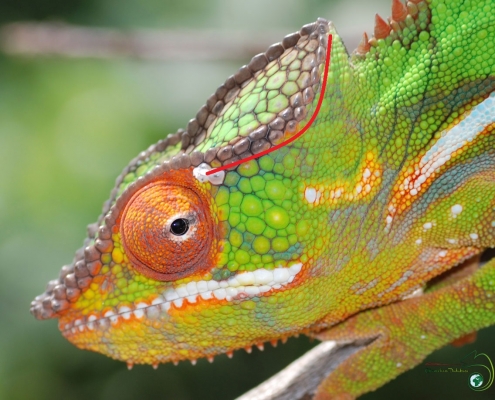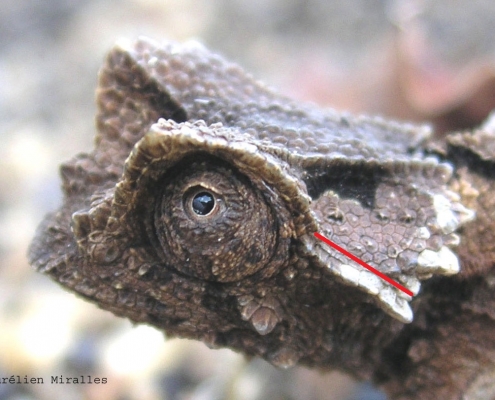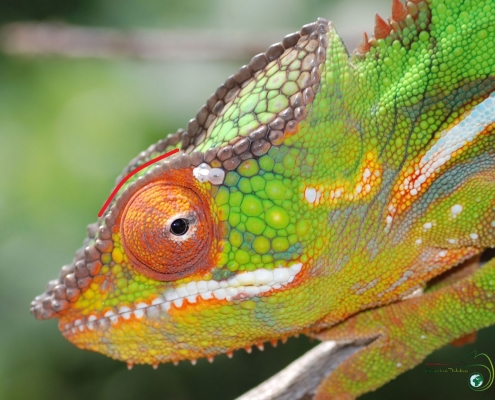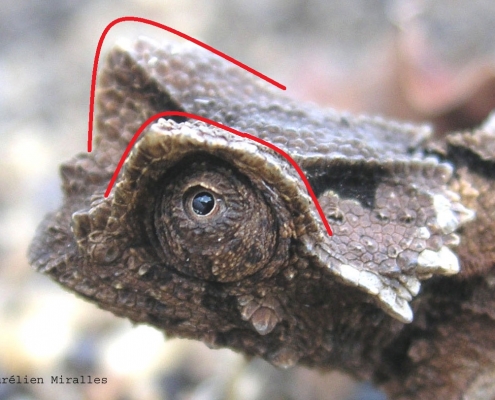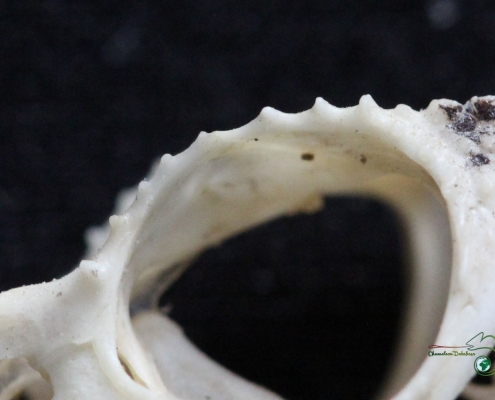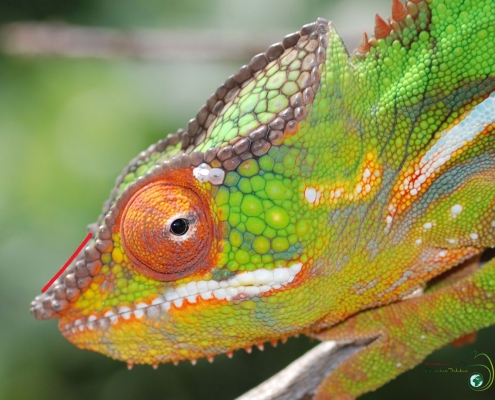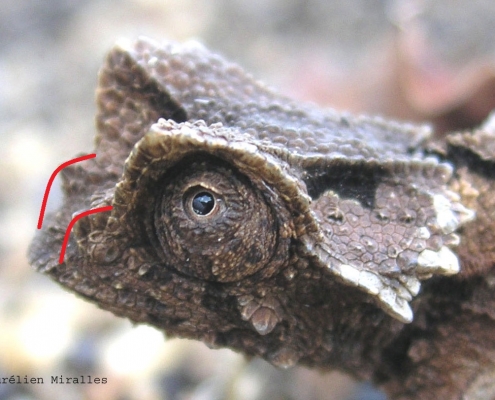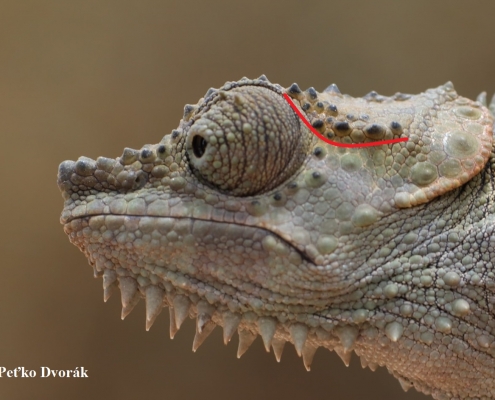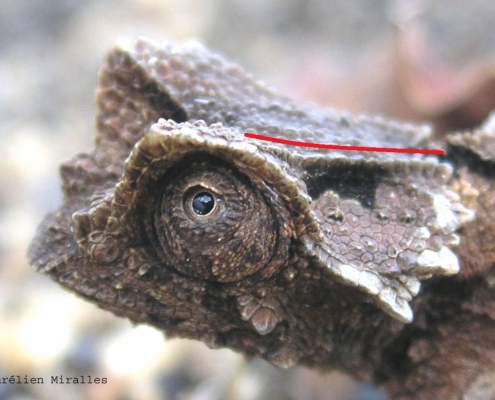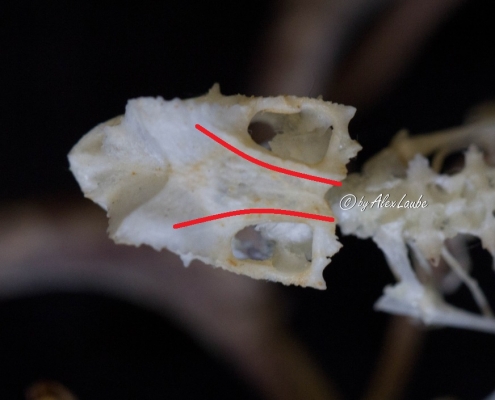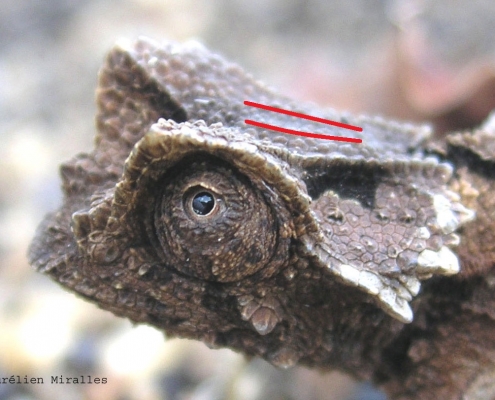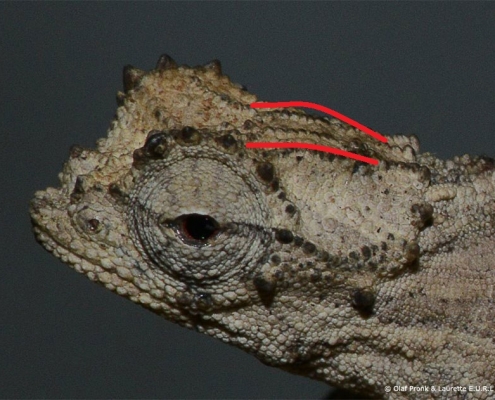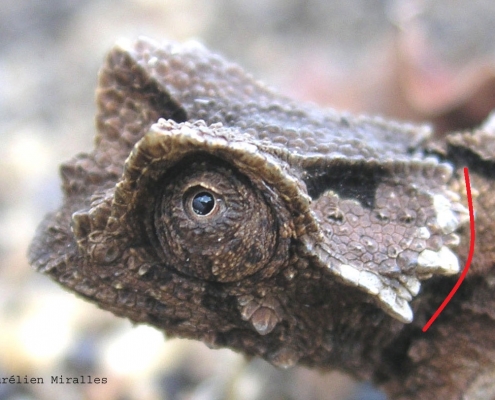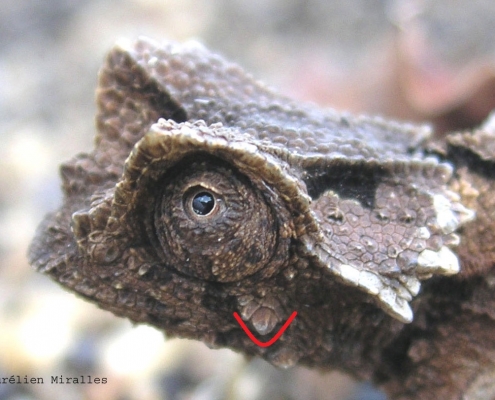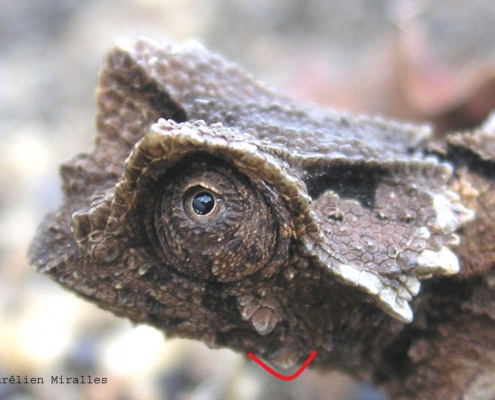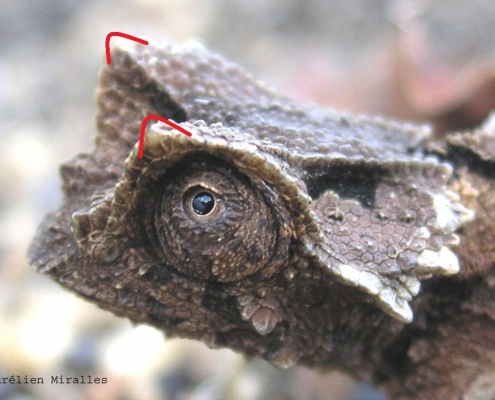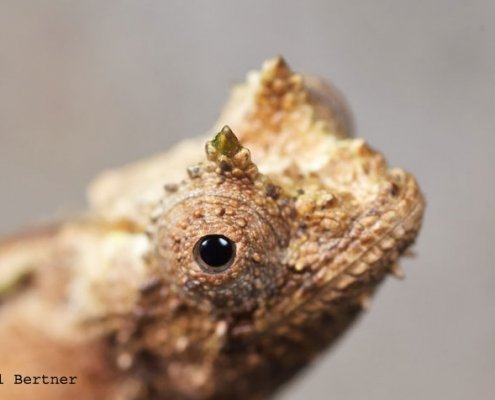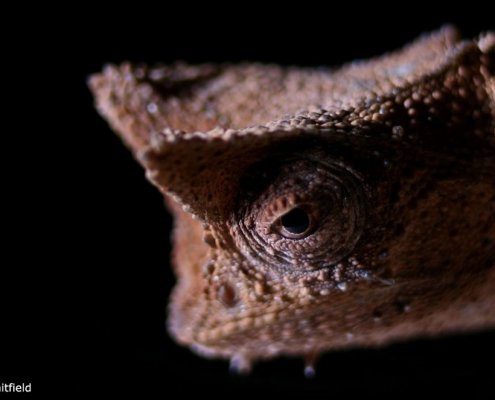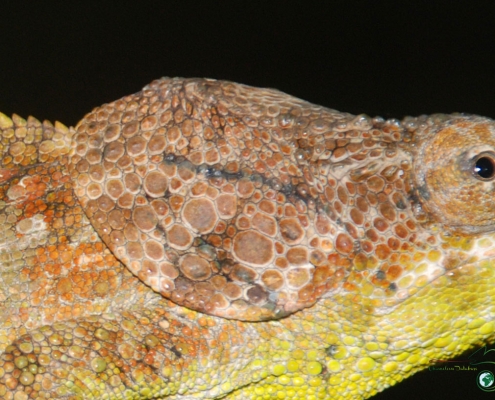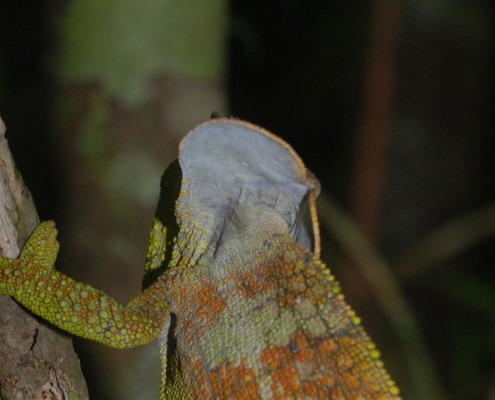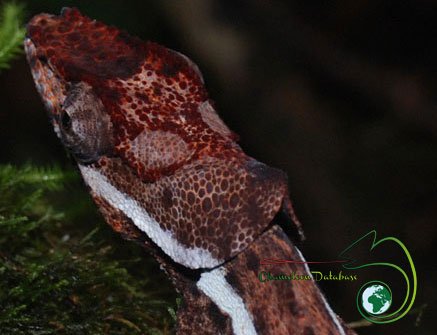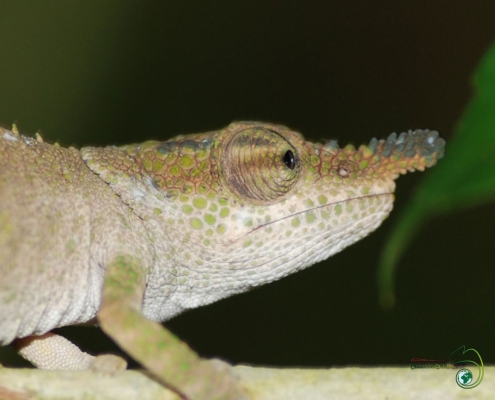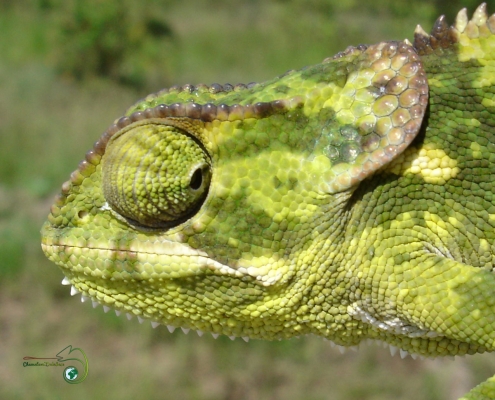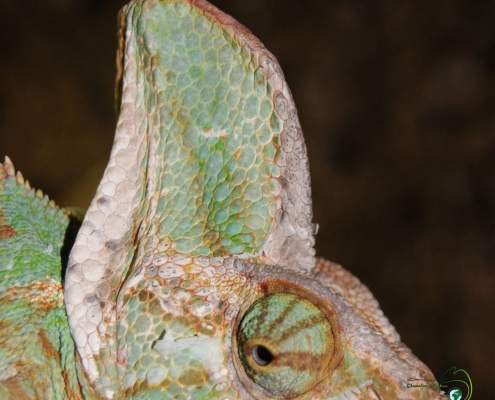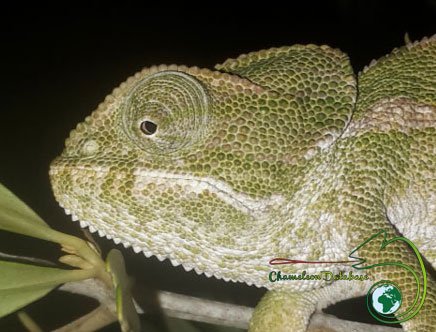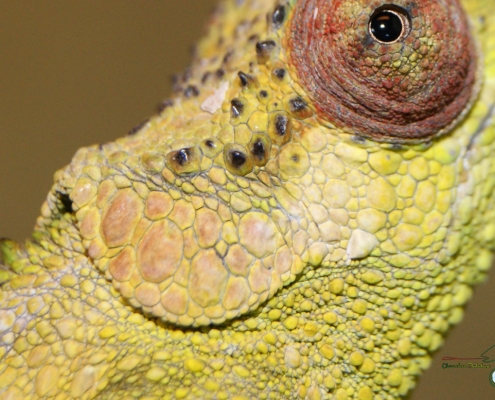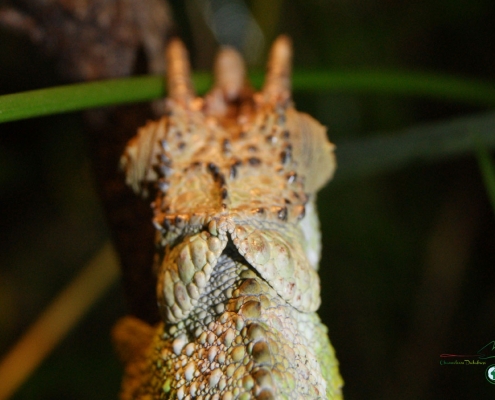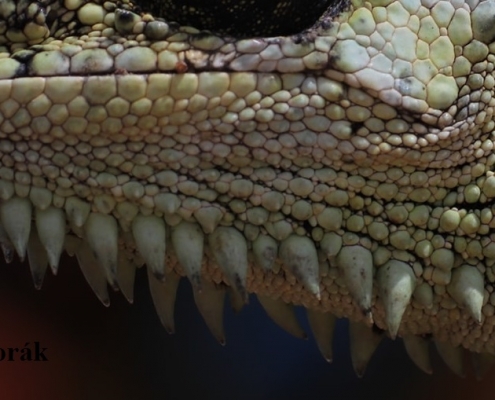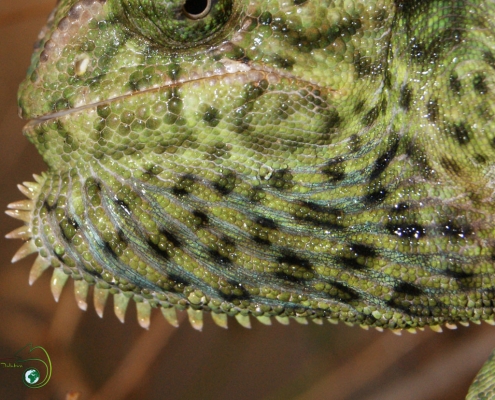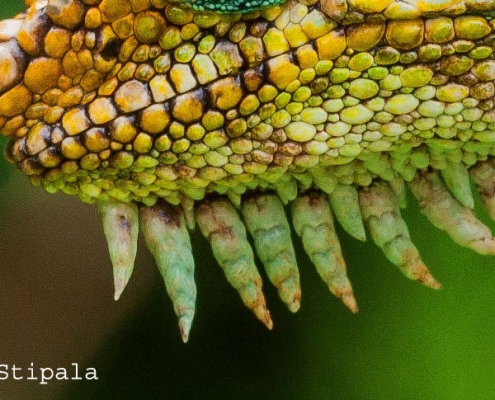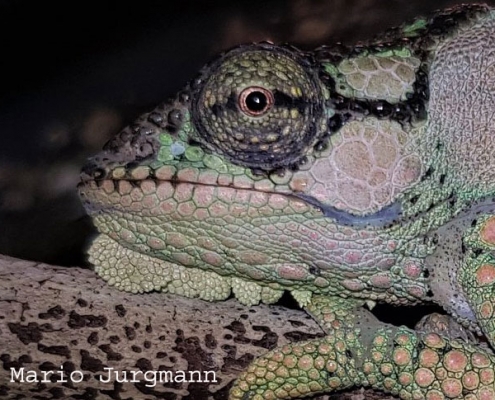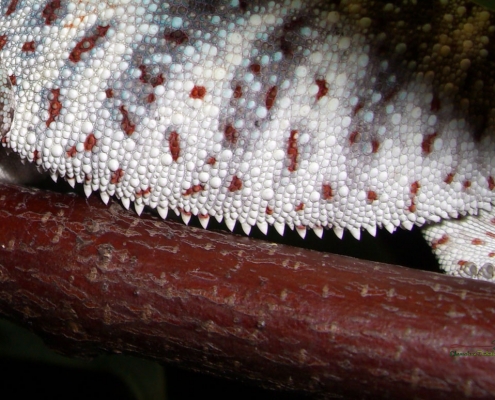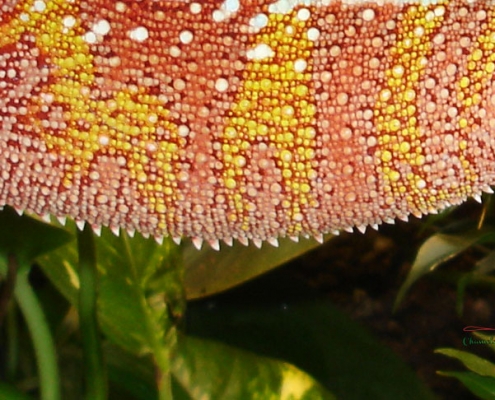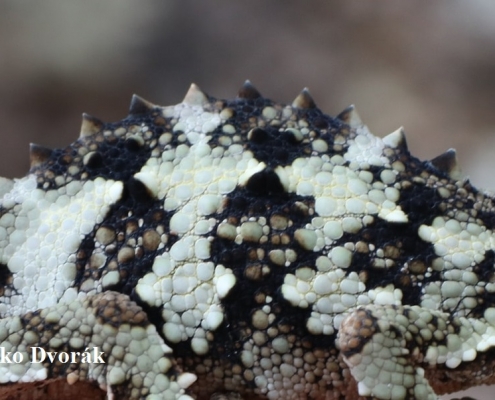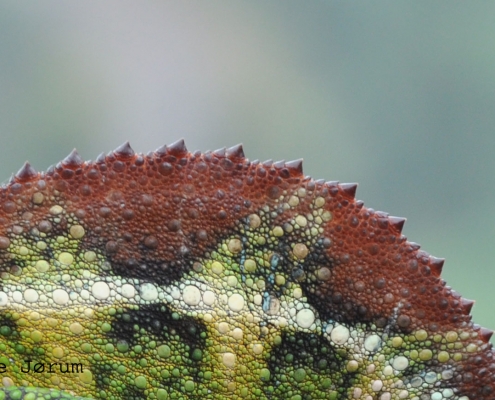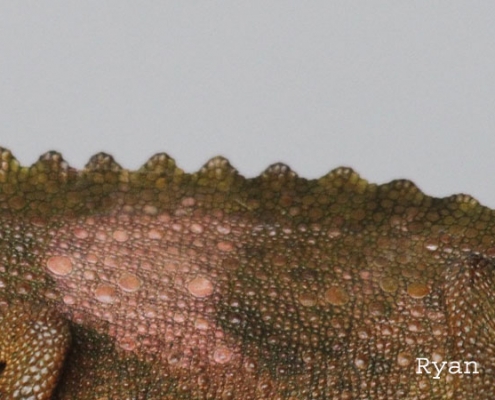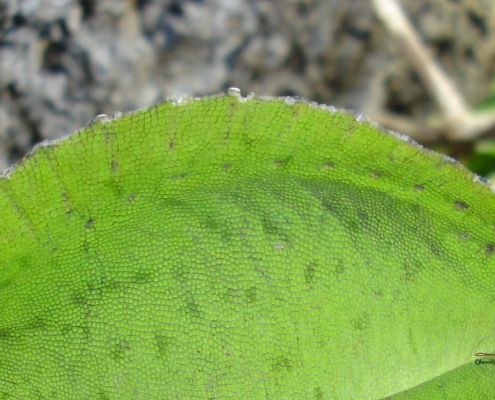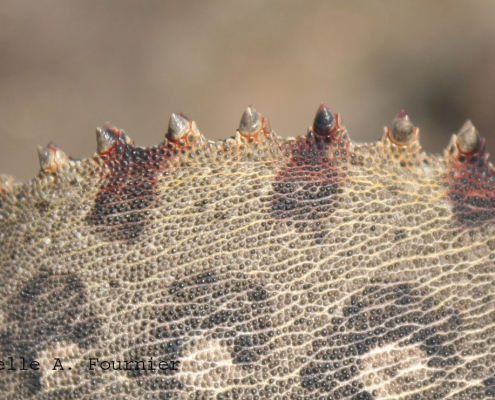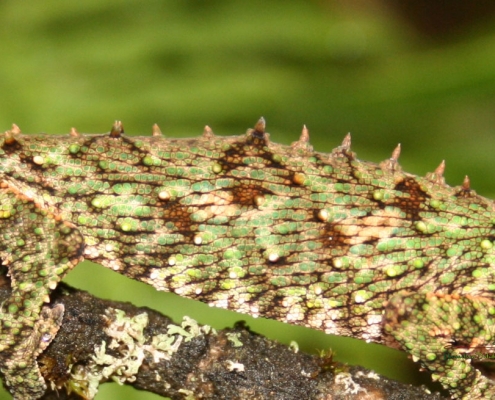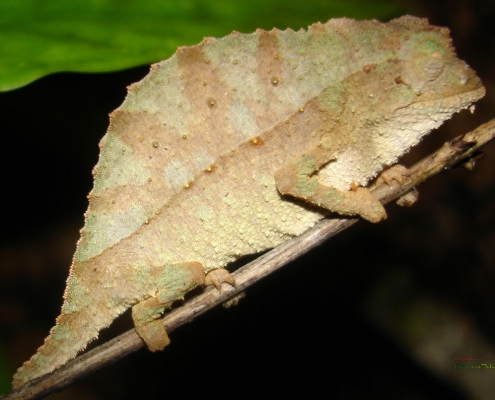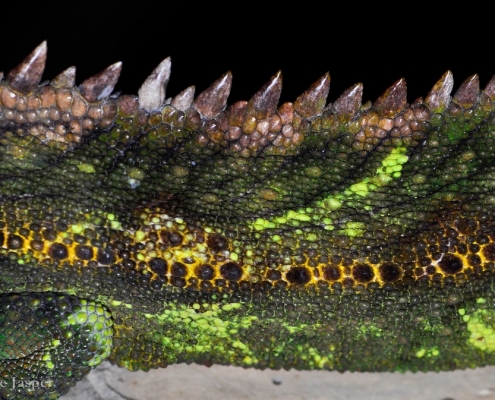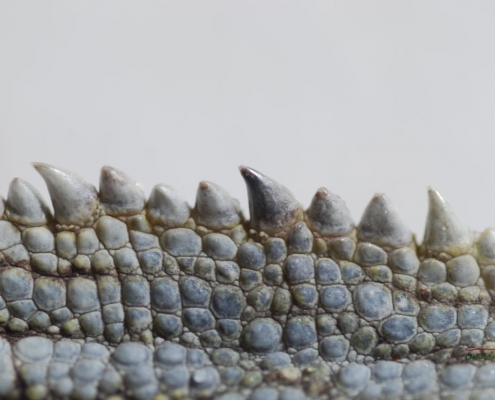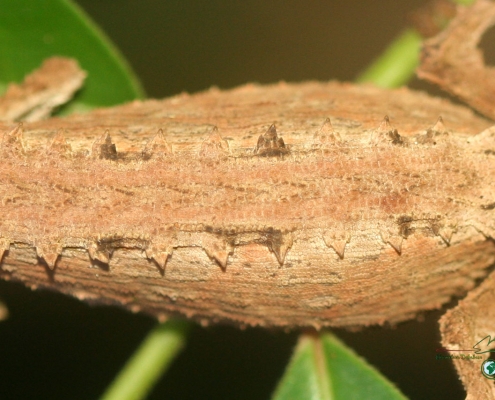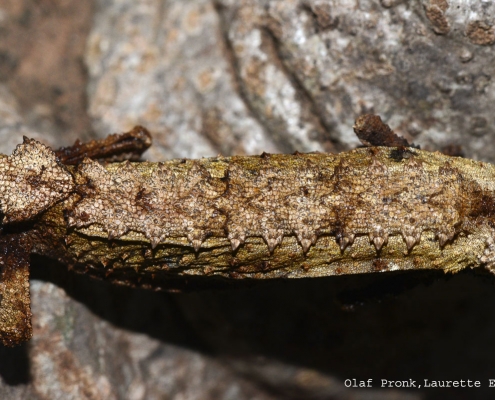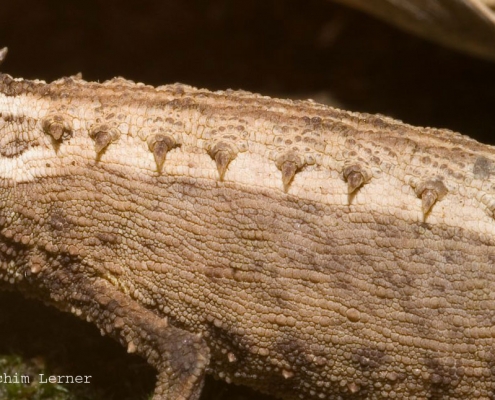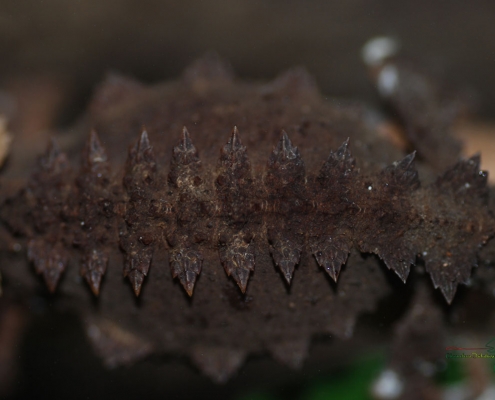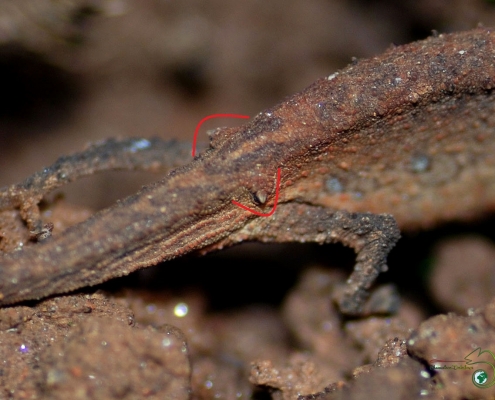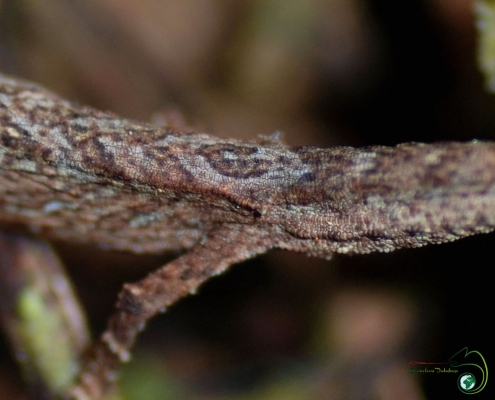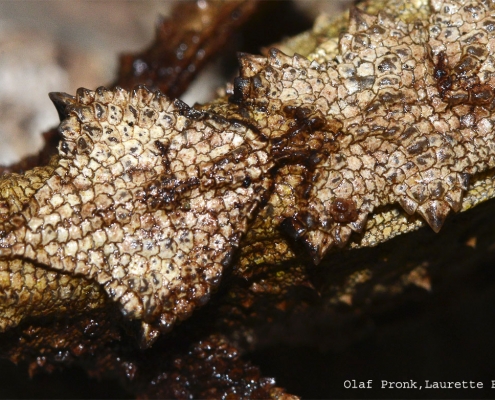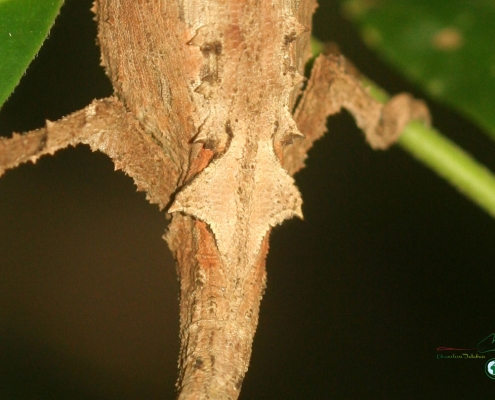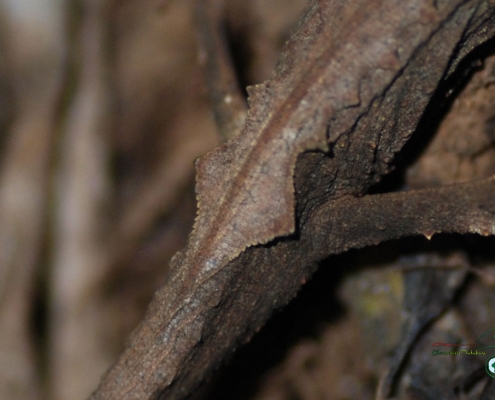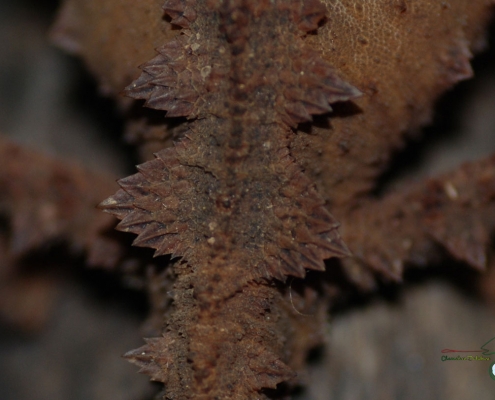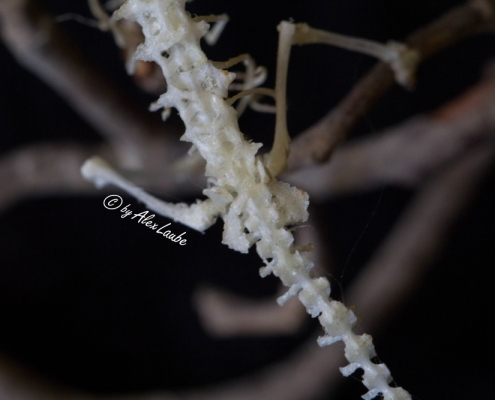Crest and scale terminology
The crests on the head are primarily formed by the bones beneath the skin. These bony structures are covered with tubercles of varying sizes and shapes. Some crests are not formed by bones, but are composed of by keratinous scales.
Parietal crest
The parietal crest is formed by the ridge of the parietal bone. It begins centrally behind the eyes and extends posterior to the apex of the casque. The parietal crest can be tall (e.g. Chamaeleo calyptratus calyptratus), concave, or flat. In some species, it splits into two branches to join the orbital crest (e.g. Trioceros jacksonii jacksonii). It is not present in all species.
Lateral crest
Each lateral crest extends from above the mouth tip to the apex of the casque. The lateral crest is divided into three parts: the rostral crest, orbital crest, and lateral crest proper.
The lateral crest proper extends from behind the eyes to the apex of the casque. In some species the lateral crest is rather flat and in others, it is elevated and forms a high casque (e.g. Calumma parsonii, Trioceros cristatus, Furcifer balteatus).
Orbital crest
The orbital crest, also called an ocular crest, is found on the upper edges of the orbits.
Rostral crest
The rostral crest extends from above the mouth tip, to just in front of the eyes.
Temporal crest
The temporal crest is only developed in some species (e.g. Trioceros affinis, Trioceros montium)
It extends from behind the eyes to reach the lateral crest, or the apex of the casque.
In some species, the temporal crest is weakly developed and together with the lateral crest forms a triangular area of enlarged scales (e.g. Calumma parsonii, Trioceros affinis)
Parasagittal crest
Bradypodion and Brookesia are known for their broad parietal bone. Species with a broad parietal bone often have ridges along each side of the bone. These ‘ridges’ are called the parasagittal crest.
Interocular crest
In some species, especially in the genus Brookesia, two low interocular crests are present.
Occipital crest
The occipital crest, consists of enlarged scales and forms the edge of the back of the head.
Some authors refer to this as the cephalic crest (Crottini 2012).
Supralabial tubercles
Some species of, Brookesia have pairs of pointed tubercles on the lateral surface of the head (Crottini 2012).
Infralabial tubercles
Some species of Brookesia, have pairs of pointed infralabial tubercles on the lateral surface of head (Crottini 2012).
Supraocular tubercles
Most species of Brookesia possess supraocular tubercles to some degree.
The supraocular tubercles vary with each species, as some tubercles are pointed and others are rounded. They can even vary within the same species.
Some species have pronounced supraocular horns (e.g. Brookesia superciliaris and Brookesia therezieni).
Occipital lobes
These skin folds, also called ear-like lobes, are attached to the back of the casque. They vary in size and shape, from being tall and thin (e.g. Chamaeleo calyptratus calyptratus), to large developed occipital lobes (e.g. Chamaeleo dilepis, Calumma brevicorne).
The lobes are often covered with plate-like scales.
In some species, they are erected during courtship display or to make themselves appear larger and frighten away opponents and predators.
Gular crest
The gular crest consists of one row of enlarged, often conical scales. However, in Calumma capuroni, Trioceros tempeli, and Trioceros laterispinis, it consists of two rows.
In Bradypodion species and Trioceros eisentrauti, the gular crest is formed by lobes of skin, covered with scales.
Archaius tigris only have one flap of skin, located underneath the mouth.
Ventral crest
The ventral crest is often white or a lighter color, than the background color of the chameleon.
It is mostly developed in the genera Chamaeleo, Trioceros, and Furcifer (e.g. Chamaeleo calyptratus, Trioceros hoehnelii, Furcifer pardalis, etc.)
Dorsal crest
The dorsal crest is formed by enlarged, often conical scales. In some species they are well developed and continue down the back and tail. In others, only a few scales behind the head forms a short, weak dorsal crest.
The dorsal crest is not present in all species.
Males of some species have a sail-like dorsal keel over the back or tail (e.g. Trioceros cristatus, Trioceros montium, Trioceros deremensis, etc).
These ‘sails’ are formed by skin stretched over long vertebral neural spines.
Paravertebral tubercles
Some authors refer to them as paravertebral tubercles ( Klaver), while most refer to them as dorsolateral spines/tubercles (Schertz, Köhler, Rakotoarison, Glaw & Vences 2019;) (Necas, Schmidt 2004, in stump-tailed chameleons).
In some cases they are called laterovertebral pointed tubercles (Crottini 2012).
Pelvic spiny scales
These pelvic scales, are often called pelvic spines (Schertz, Köhler, Rakotoarison, Glaw & Vences 2019) or spiny pelvic tubercles.
They are mostly found on the small species within the Brookesia minima group.
Pelvic shield
The pelvic shield is found in several species of Brookesia. It can vary considerably in size and shape, even within the same species.
Source:
Books:
Chameleons of Africa. By Colin Tilbury.
Chameleons Nature´s hidden jewles. By Petr Necas.
Chameleons of Africa. By Colin Tilbury.
Stump-tailed chameleons Miniature dragons of the rainforest. By Petr Necas.
The Biology of Chameleons. By Krystal A. Tolley & Anthony Herrel.
Publications:
Crottini, Miralles, Glaw, Harris, Lima & Vences 2012.
Schertz, Köhler, Rakotoarison, Glaw & Vences 2019.
Picture copyright:
Achim Lerner.
Alex Laube.
Aurélien Miralles.
Chameleondatabase.com
Jan Stipala.
Mario Jurgmann.
Olaf Pronk.
Paul Bertner.
Peťko Dvorák.
Sam Whitfeld.
Edited by Paul Freed.

